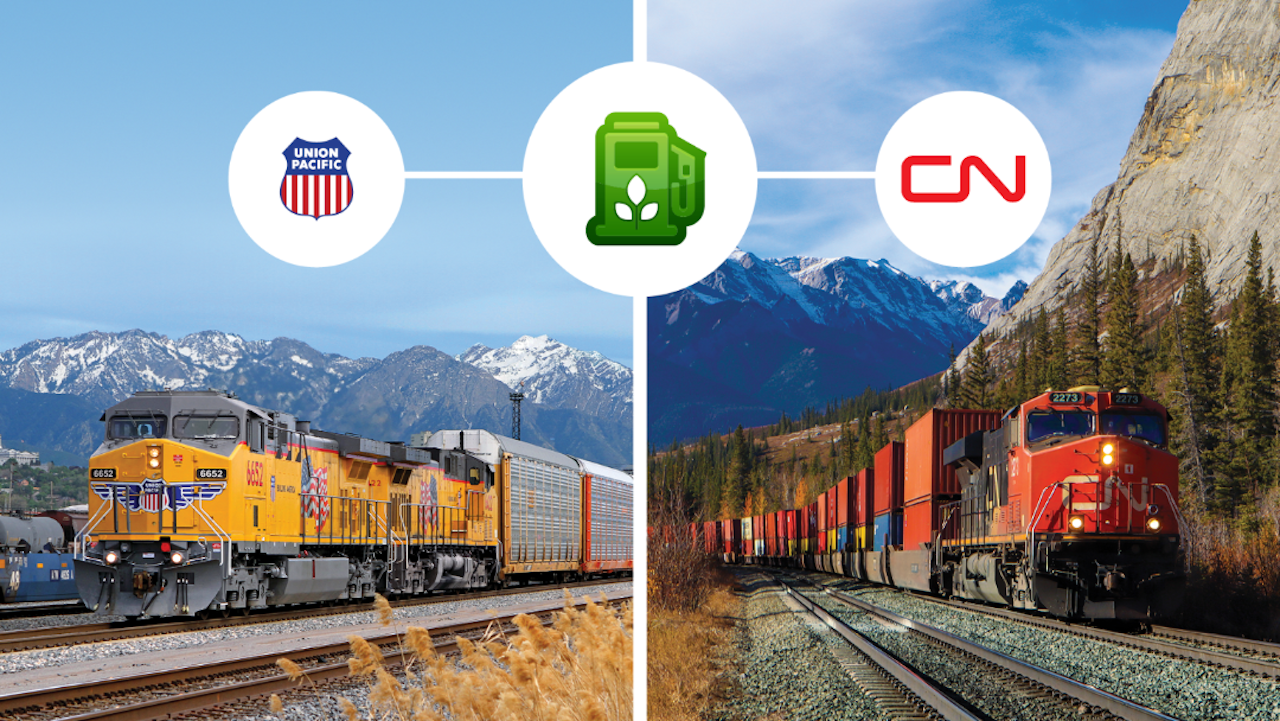
UP, CN Put Biofuels to the Test with Train-Track Treadmills
Written by Union Pacific, Corporate Communications
When it comes to reducing greenhouse gas (GHG) emissions, Union Pacific (UP) and CN are aligned.

The Class I railroads joined forces in 2023 to share the costs and resources needed to test a blend of renewable fuels on two classes of locomotives. The signal is clear: In addition to being the most environmentally responsible way to move freight by land, the rail industry is united to find solutions to further reduce rail’s environmental footprint.
“Working with Union Pacific and our suppliers is absolutely the right thing to do, for our stakeholders, our customers and the communities in which we operate,” said François Bélanger, senior director, Sustainability at CN. “It underscores our commitment as an industry to finding more sustainable paths forward.”
The collaboration allows CN and Union Pacific to get more done in a faster time frame, a boon for both companies and their customers, said Mark Lutz, assistant vice president – Fuel and Environment Management, at Union Pacific.
“It’s a great way to move the sustainability ball forward quicker and more efficiently, at a time when our shippers are looking to reduce their own carbon emissions with more environmentally responsible transportation,” said Lutz.

Stationary tests on two locomotive models began in April. These tests are akin to locomotive engines running on a treadmill, while using renewable fuel. The locomotives run 24-7 without moving, at a testing and training facility operated by the Association of American Railroads’ (AAR) MxV Rail facility in Pueblo, Colorado.
“Stationary testing is a great way to test the emissions and durability of engines running renewable fuels, while minimally impacting railroad operations,” said Jason Fox, senior director – Locomotive Engineering and Quality, for Union Pacific.
The stationary tests should be completed by the end of 2023, and, essentially, will consolidate years of over-the-road testing down to about eight months.
These tests will help determine the feasibility and efficiency of running renewable fuels on two Wabtec locomotives models. The goal is to establish that renewable fuels will not impact the engine’s reliability and will meet the U.S. Environmental Protection Agency’s goal emission requirements.
As part of an overall industry effort, Union Pacific and CN’s partnership made sense, as both companies share similar climate goals and strategies.

Both are committed to science-based targets of reducing greenhouse gas emissions by 2030, and the two are the only Class I railroads to date who have committed to setting a 2050 net-zero emissions target.
“Meeting the 2030 climate goals is an important step toward the decarbonization of our activities,” said Bélanger. “To achieve this, we must take action today.”
Renewable fuels will play a significant role in reducing rail’s carbon footprint and help Union Pacific and CN progress toward their climate goals, working in parallel to develop and test long-term alternative propulsion solutions.
“The industry is looking for an alternative form of locomotive combustion that doesn’t rely on fossil fuels but, right now, clean alternatives such as hydrogen are not commercially available,” said Lutz.
“As we look to 2030 and beyond, decarbonizing rail transportation will need new locomotive propulsion technologies and collaboration across the whole rail industry will be required to make it happen,” said Bélanger.



